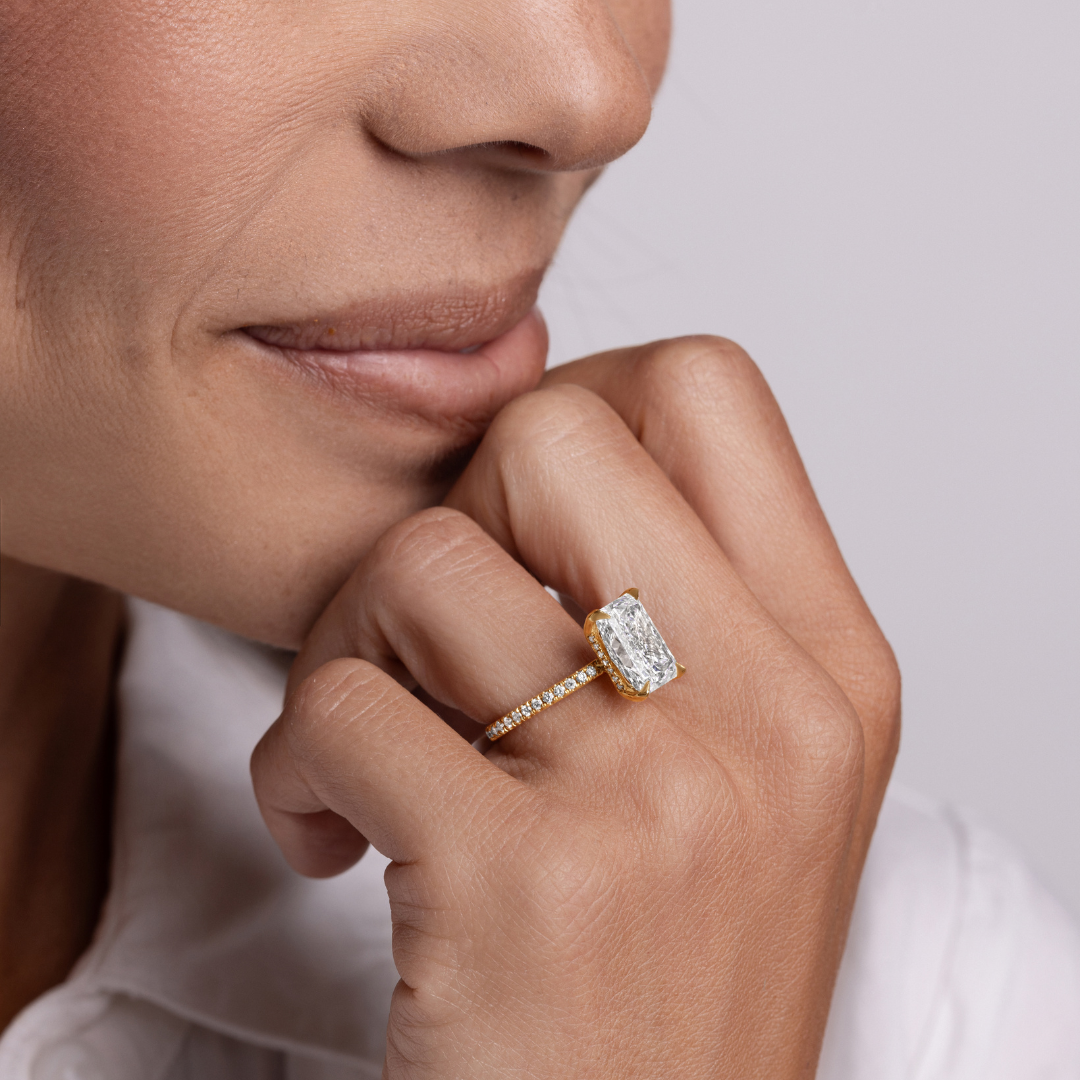Navigating the world of diamonds can be as intricate as the gemstones themselves. The quality of a diamond is determined by its physical, chemical, and optical properties. The most reliable way to assess these characteristics is through an evaluation by a professional gemological laboratory. These institutions analyze diamonds using standardized methodologies, like the well-known and recognized 4C principals, and provide detailed grading reports that document a stone’s attributes.
The two most reputable organizations for diamond grading are the International Gemological Institute (IGI) and the Gemological Institute of America (GIA). Both laboratories assess natural and lab-grown diamonds, but their grading approaches differ. Understanding these differences can help you make an informed decision when selecting a diamond.
What Is IGI Diamond Grading?
The International Gemological Institute (IGI) was established in 1975 in Antwerp, Belgium, to provide gemstone analysis, jewelry appraisal, and gem identification. Over the years, IGI has expanded globally, with laboratories in New York, Bangkok, Mumbai, and Hong Kong, among other locations. The organization employs hundreds of gemologists who evaluate diamonds and conduct research in gemology.
IGI examines diamonds based on the 4Cs—carat weight, clarity, cut, and color. Their reports detail a diamond’s characteristics, including any enhancements or treatments. IGI's grading system is widely recognized and accepted in the jewelry industry for trade, sales, and insurance purposes.
What Is a GIA Diamond Grading Report?
The Gemological Institute of America (GIA) was founded in 1931 as a nonprofit organization dedicated to gemological research, education, and diamond grading. Headquartered in Carlsbad, California, GIA operates multiple laboratories and research centers worldwide. The institute is best known for developing the International Diamond Grading System™ and the 4Cs in 1953, which have become the industry standard for evaluating diamonds.
GIA provides an unbiased analysis of a diamond’s characteristics through its grading reports. These reports include comprehensive details such as carat weight, measurements, cutting style, and any indications of laboratory growth or treatments. For lab-grown diamonds, GIA identifies the method of synthesis, such as chemical vapor deposition (CVD) or high-pressure high-temperature (HPHT).
Key Differences Between IGI and GIA Grading Reports
Grading Standards
Both IGI and GIA follow the 4Cs grading methodology. However, GIA’s grading system is known for being more stringent, particularly in assessing color and clarity. IGI, on the other hand, places greater emphasis on the cut quality of lab-grown diamonds, evaluating craftsmanship and light performance.
For natural diamonds, GIA’s grading standards are regarded as the most precise and consistent in the industry, making their reports the preferred choice for buyers prioritizing accuracy and transparency. IGI’s grading is more widely used for lab-grown diamonds due to their detailed analysis of the cutting process and affordability.
Report Format
GIA issues only digital reports for its diamond grading, which are concise and focused on essential grading details. IGI offers both digital and printed reports, often including additional grading insights such as polish, symmetry grades, and fluorescence. While IGI reports are recognized in many international markets, GIA’s grading reports are generally more valued for their credibility and influence on resale pricing.
Cost and Processing Time
Because of its rigorous grading standards, a GIA report is typically more expensive than an IGI report. Additionally, GIA’s turnaround time is often longer due to the volume of diamonds they grade and their meticulous evaluation process. In contrast, IGI’s grading services are more cost-effective and have a faster processing time, making them a popular choice for lab-grown diamonds.
Research and Education
GIA is a leader in gemological research and offers advanced education programs, including the prestigious Graduate Gemologist™ (GG) diploma. This credential is highly regarded in the jewelry industry. GIA continuously conducts research to refine diamond grading methodologies and expand gemological knowledge.
IGI also provides education and training programs for industry professionals, focusing on gemstone identification, grading, and jewelry design. While valuable, IGI’s training programs do not carry the same global recognition as GIA’s educational offerings.
Choosing Between IGI and GIA Grading Reports
Both IGI and GIA provide reliable grading reports, but the best choice depends on your specific needs. If you are purchasing a natural diamond and prioritize strict grading standards, a GIA report is the preferred option. For lab-grown diamonds, IGI reports are widely accepted and offer a thorough evaluation at a lower cost.
Ultimately, selecting a diamond should be based on its visual appeal and personal preference rather than solely on its grading report. Explore our collection of IGI and GIA-graded diamonds at Happy Jewelers to find the perfect gemstone for your needs.
Frequently Asked Questions
How Do IGI and GIA Grading Reports Compare in the Market?
GIA has a reputation for more conservative and consistent grading, particularly for natural diamonds. While both IGI and GIA are respected in the industry, GIA reports generally hold greater credibility and influence in resale value.
Do IGI and GIA Grade Lab-Grown Diamonds?
Yes, both IGI and GIA grade lab-grown diamonds based on the 4Cs. These reports provide essential information about a diamond’s characteristics and origin.
Should I Only Buy a Diamond with a GIA Grading Report?
While a GIA grading report offers a high level of confidence in a diamond’s quality, diamonds graded by IGI or other reputable labs can also be excellent choices. It is always best to examine the diamond in person and consider its appearance alongside the grading report details.





Share:
Moissanite Rings: Frequently Asked Questions
Pushback vs Screwback vs Flatback Earrings